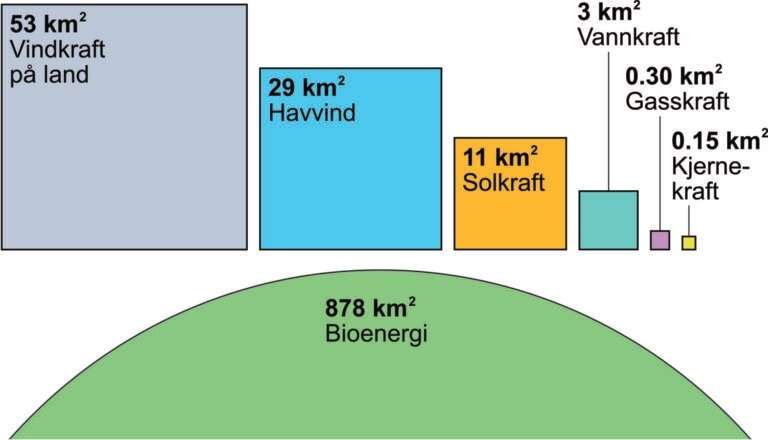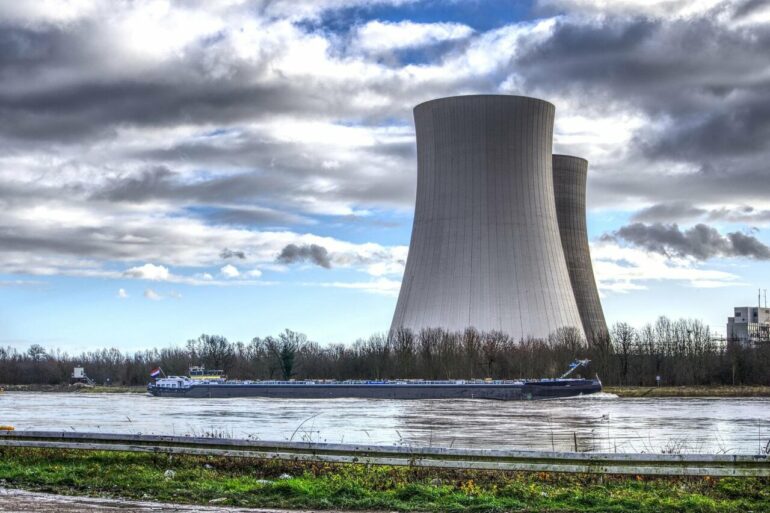The saying that “misfortune never comes alone” is also the title of a French short silent film from 1903. One could say the same about the climate crisis, which is closely linked to the environmental and energy crises. The three crises have a mutual influence on each other like the parties in an insoluble triangular drama.
We will need three times more electricity in 2050 if the world is to successfully navigate a green transition and reach climate targets. In order to generate enough electricity, we must set aside sufficient land to produce the energy we need. However, appropriating land to produce energy damages ecosystems, which in turn exacerbates climate change.
How can we prevent this drama from unfolding on our planet?
NTNU has collaborated with the Grenoble Institute of Technology on a new study to conduct a systematic survey of the land use of all energy solutions. We have analyzed 870 power plants worldwide, including solar power, wind power, hydropower and nuclear power. The study was published in Scientific Reports.
One finding of the study was that hydropower is the most land-efficient renewable energy source worldwide. This challenges common opinion that solar power is the most energy-dense renewable energy source.
A world in eco-grief
Our research shows that environmental encroachments in the world will increase sixfold by 2050 if we follow the International Energy Agency’s (IEA) net-zero emissions scenario. In other words, it is impossible to solve the climate crisis without seriously worsening the environmental crisis if the current energy policy is implemented.
The world’s electricity production for 2050—using the current energy plan—will require an area as large as one and a half times the size of India or the same size as the entire EU, assuming we become climate neutral.
Placing a higher value on environment
Human beings are already expanding across too much of this planet. The UN Intergovernmental Science-Policy Platform on Biodiversity and Ecosystem Services (IPBES) shows that we have to protect nature if we are to preserve the world’s biological diversity. Forests store CO2 and provide us with good air to breathe. Greta Thunberg recently warned against burning forests for energy, saying this practice cannot be greenwashed as renewable.
All energy transitions throughout history have until now been characterized by gradually producing more energy on smaller land areas. In earlier times, our only source of energy was the forest, which had to be sacrificed for food and heat. We shifted from wood to coal, and then to oil and gas.
The industrial revolution was a way out of the environmental crisis and deforestation in its time. Instead, protecting and enjoying the forest became more of a priority. But today we are unfortunately degrading the environment and creating the same problems.
Using forests for fuel is worst
The obvious answer to best resolve the trilemma of climate, energy and environment is to continue searching for the most energy-dense solutions. We need to follow the data wherever it leads, and the new study provides an opportunity to do this.
Among the renewable energy sources, bioenergy—which includes burning forests for energy—is the worst, following by onshore wind, offshore wind, wave power, solar power, and finally hydropower.
Among the renewable energy sources, bioenergy—which includes burning forests for energy—is the worst. Using 878 square kilometers of space to generate one terawatt hour—which would not supply more than a quarter of New York Citys needs—rules out bioenergy from the get-go as the most land-efficient solution.
The next options are onshore wind, offshore wind, wave power and solar power, followed by hydropower, which is the most land-efficient renewable source. Although bioenergy is a very dilute form of energy, the research finds that onshore wind power has some of the same problems:
Biomass is by far the most dilute renewable energy source, but in a sample of 148 onshore wind farms we find that wind is the second most dilute source of power generation.

The area requirements to cover electricity consumption of 60 000 Norwegian households (1 terawatt hour) for all energy technologies. Translation: Vindkraft: wind power; havvind: Offshore wind power; Solkraft: solar energy; Vannkraft: hydropower; Gasskraft; Gas-fired power plants; Kjernekraft: Nuclear power; Bioenergi: Bio energy. © NTNU
Onshore wind power has its challenges
One of the claims of people who work with wind power is that the land taken up by wind farms can be used for multiple purposes, such as grazing, agriculture and recreation. However, the wind power resources found on land areas that are already being used for other purposes are quite limited, which also limits the possibility of scaling up wind power to be a dominant energy solution worldwide.
Wind power also provides no opportunity to restore a damaged environment.
According to our research, when an occupied area of wind power only considers the tower footprints and access roads, the specific power could easily increase by at least an order of magnitude. However, this does not fully represent the high spacing between the distributed energy sources of a wind farm and the low scalability in areas with limited space.
High land requirements also generate significant implications for the materials and infrastructure needed to collect energy from the wind turbines. There are potential indirect effects on wildlife and deterioration of the quality of the landscape, and the visual footprint is significant throughout the area.
Nuclear power comes in as a winner
If we consider all energy sources, nuclear power is the clear winner in terms of spatial energy density. Nuclear power could supply the entire world with emission-free energy after the fossil age on an area half the size of Norway’s Viken county, or half the size of the U.S. state of Vermont.
When we compare the figures, it turns out that the spatial extent of nuclear power is 99.7% less than onshore wind power—in other words, 350 times less use of land area.
This data should be seen in light of the projected environmental crisis by 2050. An energy transition based on nuclear power alone would save 99.75% of environmental encroachments in 2050. We could even remove most of the current environmental footprint we have already caused.
NIMBY or YIMBY?
It is true that nuclear power has had a popularity problem for a number of years. Today nuclear power falls outside the definition of renewable energy but will presumably be considered renewable in the long term. Uranium—the fuel for nuclear power—will be obtained from the sea in the future, where uranium is naturally replenishable. In addition, used uranium will probably become reusable with new technology. Nuclear power would then qualify as a renewable energy source.
Space is a factor that is increasingly influencing the popularity of energy sources, as exemplified with the well-known acronym NIMBY—Not In My Back Yard. The acronym is often used in the context of wind and solar power developments that affect people, animals and nature.
Recent studies show that nuclear power could be a desirable neighbor for many residents, as it gives local communities supply security for business development and jobs. We’re talking about a reverse NIMBY effect, or YIMBY—Yes, In My Back Yard.
Climate and environment need to be solved together
Just like the three crises—climate, nature and energy—arise together, they also need to be resolved together. For many years, the focus has been on climate-smart solutions, while environmentally smart solutions have remained a little under the radar.
It is almost as if we have completely forgotten how the conservation and restoration of nature can play a vital role in mitigating climate effects.
The focus on land use should therefore be raised. The study in question focuses on land efficiency and addresses precisely this point. Nuclear power is a clear winner in such a race. Bioenergy is the loser, and land requirements will be its nail in the coffin. Should we stop cutting down our forests to make electricity?
More information:
Jonas Kristiansen Nøland et al, Spatial energy density of large-scale electricity generation from power sources worldwide, Scientific Reports (2022). DOI: 10.1038/s41598-022-25341-9
Provided by
Norwegian University of Science and Technology
Citation:
Nuclear power causes least damage to the environment, finds systematic survey (2023, April 11)



